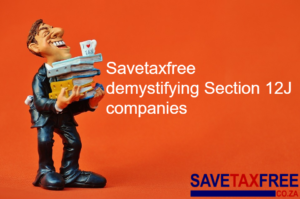ETF ANALYSIS Standard & Poor Top 50 ETFs: CoreShares S&P Top 50 ETF and NewFunds S&P GIVI Top 50 ETF
Related Articles
Intellidex | 24 August 2018
ETF ANALYSIS
Standard & Poor Top 50 ETFs: CoreShares S&P Top 50 ETF and NewFunds S&P GIVI Top 50 ETF
Performance review: The two ETFs invest in the 50 biggest companies on the JSE, which consist of a range of sectors. Effectively, therefore, their returns are tied to the performance of the broad market. Positive performances from Naspers and British American Tobacco (BAT) largely drove the indices over a five year period.
The CoreShares S&P Top 50 ETF returned an impressive 18.2% in the year to end-June, significantly outperforming the S&P GIVI ETF, which lost 1.73%.
Since its inception on June 2008, the S&P GIVI returned an average of 7.58% a year, dropping to 5% a year over the past five years. The CoreShares fund has yielded 5.8% a year since it was formed in May 2015. Those compare favourably with annualized inflation of 5.45% over five years but the funds have failed to beat the all-share index’s 11% return over the same period.
The noticeable differences in the historical performance of the ETFs is largely due to the different methodologies they use in selecting constituents. Both track the performance of the SA top 50 index.
Newfunds, which has historically been the better of the two, is adjusted every six months and selects its constituents based on what the fund manager believes is their intrinsic value. This takes into account fundamental indicators of the company and, because it gives more weight to counters that have lower volatility, it also reduces the return variability.
CoreShares, in contrast, determines weighting by float-adjusted market capitalization. That means it only considers equity price and the number of shares readily available in the market, excluding those held by insiders, promoters and government. This means it is more likely to reflect market movements. The constituents are included in the same weightings as the index but there is a cap: no one company can make up more than 10% of the overall fund.
The two differing methodologies result in the two funds holding similar stocks but with differing weightings. For example, both hold BHP, Sasol, Naspers, BAT and Richemont. However, NewFunds has a larger weighting of these stocks in its top 10 holdings, making it more vulnerable to risk: the fund’s overall performance is largely determined by those companies.
Outlook: The performance of the JSE’s biggest companies is closely tied to that of the general economy, and the outlook is rather bleak. Many of the bigger counters held by the two funds earn a substantial of their income from outside SA, making the rand an important factor in their performances.
The rand gained in July on the back of an improved trade balance and proposed investments from China. However, it plummeted in August, following comments by President Cyril Ramaphosa regarding land expropriation and a fallout between US President Donald Trump’s imposition of import tariffs on Turkey and partly due to structural problems in SA’s economy.
The Absa purchasing managers index (PMI) crossed the important 50-point mark in July, rising to 51.5 from 47.9, suggesting that the manufacturing sector will do well in the third quarter of 2018. However, employment figures disappointed with the unemployment rate increasing to 27.2% during Q2 from 26.7% in Q1. Given that consumption – which feeds off the employment level – is the biggest component of SA’s national income, the unemployment rate is worrying. Much-needed economic growth remains elusive and the Reserve Bank has downgraded its 2018 growth forecasts to 1.2% from 1.7%. However, a recovery is expected in 2019, with a growth of 1.9% expected, upwardly revised from 1.7%.
Top holdings: Both ETFs invest in the top 50 companies on the JSE, which operate in different sectors. Thus, both funds are among the most diversified pure equity ETFs on the market.
Key facts:
Suitability: These funds are invested in equities and may undergo periods of high volatility in the short term. They are suitable for long-term investors with an appetite for risk. Equities are known to grow ahead of inflation and other asset classes over longer investment horizons, and both ETFs have outperformed inflation over five years.
Risk: These are high-risk funds with over 90% of their holdings in equities. JSE companies tend to move in line with economic cycles, thus a decline in economic activity is likely to affect both funds negatively.
Fees: The annual total expense ratio (TER) for the Newfunds GIVI SA top 50 is 0.23%, which is cheaper than the CoreShares at 0.26%.
BACKGROUND: Exchange-traded funds (ETFs)
Exchange-traded funds (ETFs) are passively managed investment funds that track the performance of a basket of pre-determined assets. They are traded the same way as shares and the main difference is that whereas one share gives exposure to one company, an ETF gives exposure to numerous companies in a single transaction. ETFs can be traded through your broker in the same way as shares, say, on the EasyEquities platform. In addition, they qualify as a tax-free savings account, where both capital and income gains accumulate tax free.
Benefits of ETFs:
- Gain instant exposure to various underlying shares in one transaction
- They diversify risk – the ETF is exposed to the whole market, as well as asset classes
- They are cost-effective
- They are liquid – it is usually easy to find a buyer or seller and they trade just like shares
- High transparency through daily published index constituents






